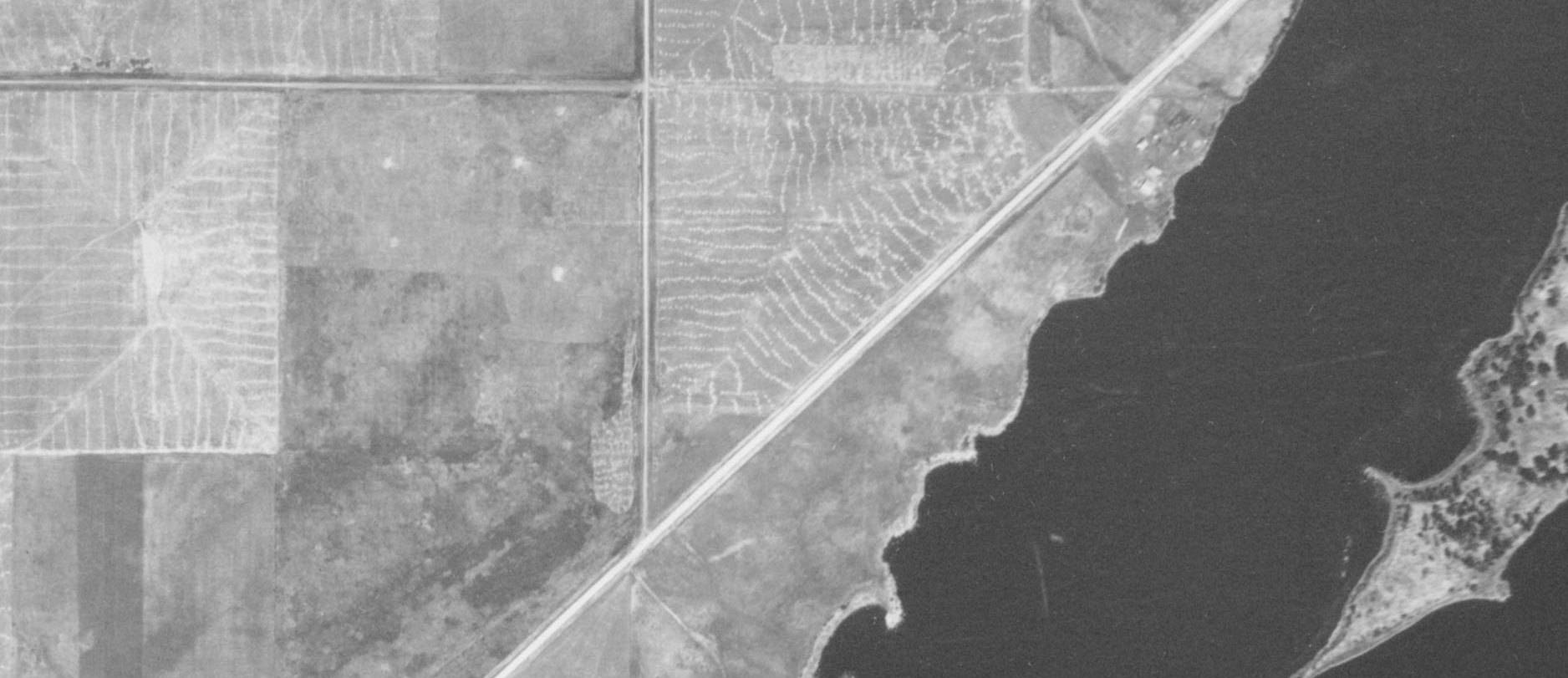Browns Valley, Minnesota, is Muhammad Ali to my George Foreman. Not long after I first heard about the existence of a lost golf course in the far-western Minnesota town, Browns Valley began bobbing and weaving, feinting and jabbing, doing the rope-a-dope.
Browns Valley was the rope. I was … well, guess what I was.
The history of golf in the small town on Minnesota’s Traverse Gap, occupying the westernmost point of a notch at the South Dakota border, with Lake Traverse to the north and Big Stone Lake to the south, threw me for a couple of loops when I started looking into it.
Browns Valley’s Inter-Lake Tribune of April 23, 1925, pointed toward the establishment of a future lost golf course when it reported, “A big bunch of golf enthusiasts from Browns Valley, met a like bunch from Beardsley on Sunday last, down on the banks of the Big Stone, at what is known as Anderson’s Point, where golf grounds had already been selected and partly laid out.
” … much interest and enthusiasm was displayed. The preliminary steps were taken for the organization of a golf club of 50 members. … They may have to buy a sprinkler, for they do say Harry Smith and one or two others raise an awful dust, whole clouds of dust, when they pound away at the pellet — and miss it.”
Harry, I know what it’s like to whiff.
My mind had been overly focused on identifying a lost course in Browns Valley — and only Browns Valley. I didn’t consider another possibility until re-reading an April 1928 Minneapolis Tribune story that reported 29 cities would be represented at a Central Minny tournament on July 9-10 in Sauk Centre, among them “Browns Valley-Beardsley.”
Wait a minute. There’s a reference to Beardsley again.
As it turns out, Browns Valley and Beardsley are close, at least geographically, and most likely shared a golf course and golf club.
The cities of Browns Valley (1930 population 981, 2010 population 589) and Beardsley (406, 233) are separated by only 6.5 miles on a direct path, so it became clear that the two cities’ golfers had combined to form a club for competition’s sake. And, apparently, to share the same golfing grounds, close to Big Stone Lake.
Then it hit me — like an Ali right hook — that I already had identified this lost course in “Fore! Gone.” The book reported that Lakeside Golf Club was established in 1924, five miles from Beardsley and near the state border — which coincides with the location of the course described in the 1925 Inter-Lake Tribune story. (A Browns Valley librarian last week told me it was her understanding that the course lay on the Hornstein property, and a plat map from that era shows a Hornstein property near Big Stone Lake, with three Anderson properties — Anderson’s Point, remember? — nearby. A creek, perhaps Fish Creek, appears to have run through the Hornstein property. Neither the course nor its remains, however, are visible in aerial photos from 1938, the earliest that can be readily accessed.)
The Browns Valley-Beardsley course, I had reported in my book, citing the 1930-31 American Annual Golf Guide, was nine holes, 2,227 yards, par 33, with sand greens.
I was dazed but ultimately satisfied that I had resolved the matter of Browns Valley’s lost golf course.
Then came Round 2, ding-ding-ding. I decided to try to determine when the Browns Valley-Beardsley course was abandoned. And I stumbled across more news I hadn’t anticipated.
“New Golf Links,” read the headline in the Inter-Lake Tribune of April 25, 1930. “Browns Valley is to have a new Golf Course,” read the first sentence.
Another Browns Valley lost course?
Well, yes and no. A lost course, yes. Only not in Minnesota.
” … the new links are to be located on the west side of Lake Traverse on the historic Indian Mounds,” the Inter-Lake Tribune story continued.
Which places that golf course in South Dakota — a few miles north of Browns Valley. And which makes sense when considering the story went on to report that the golf club included members from Browns Valley, Sisseton, Effington, Rosholt and Peever. The latter five cities are all in South Dakota.
“The club has been named Tonka-Mani,” the Inter-Lake Tribune reported, “which in the Sioux language means Long Walk, and in addition to the appropriateness of the title, the club is also called by the name of the Indian from whom the lease was obtained.”
The Tonka-Mai club was reported to have taken out a 10-year lease on 80 acres of land. Oscar Oman, the pro at Alexandria Golf Club, was hired to lay out the course. I have no information on how long Tonka-Mai might have lasted, only a likely confirmation that it did exist based on a 1938 aerial map of the area that clearly shows a golf course routing.

Even further, it appears Browns Valley took one more swing (and miss, for better or worse) at golf. Randy LaFoy, who researches Minnesota golf courses that were supported by Works Progress Administration projects, passed along a 1938 document that proposed “a complete recreational area and park development” for Browns Valley that would include “golf course, tennis courts, and other sports facilities.” The document said the park would be built on “Village of Browns Valley owned property.”
The proposal was rejected. And that was the end of golf in Browns Valley.
I think. Unless Ali wants to drag me back into the ring.
(Photo at the top of this post is by Peter Wong.)
Latest posts by Joe Bissen (see all)
- Island courses: Photo gallery - February 24, 2024
- Island outposts: Coney Isle and Circle Lake - February 24, 2024
- Lost courses, or just my imagination? - February 7, 2022
